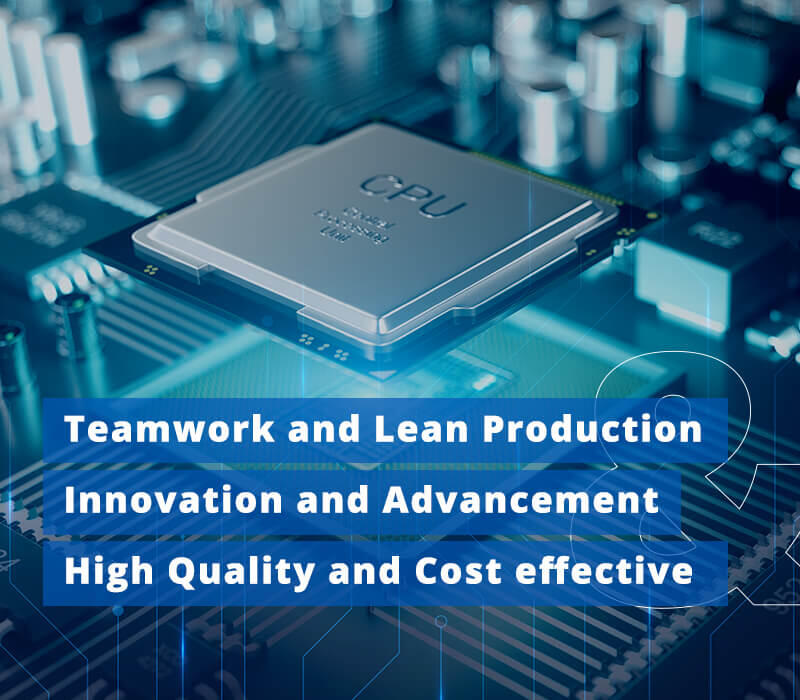Understanding Printed Electronics and Screen Printing
Understanding Printed Electronics and Screen Printing
Contents
Have you ever thought of ‘print’ electronics like traditional printing? Foldable phones, electronic paper, bio-sensor patches… How come all of these are flexible like a thin film? Previously, we might think electronic components are hard, square boards, and need to be installed together to build an appliance. Nowadays, we achieve all of these production via printed electronic made by traditional printing techniques.
What is printed electronic? What are the differences between printed electronics and conventional electronics? As one of the leading screen printing equipment manufacturers in Taiwan, BUILT-IN introduces the basic knowledge here today.
What is Printed Electronic? Is it Different from Conventional Electronic?
Printed Electronics (PE) is the electronics made by conventional printing techniques, such as screen printing, flexography, inkjet…etc. This concept has emerged since the 1930s, which is applying conventional printing technology to print electronics. The ink used for this technology is conductive, such as silver and carbon.
Printed electronics technology prints organic and inorganic materials on almost any material in the form of thin paper (flexible substrates). The thickness of the substrate is 0.05~6 mm, which is much thinner than traditional PCB.
Compared to traditional silicon-based electronic components, the layers of printed electronic components are mixed with printing inks. Conventional electronic components have many layers of mounting and lamination. Therefore, the change of the components of the printed electronics’ ink and the material will change the properties in a shorter time. It also has other pros and cons, which we will discuss later.
What is Screen Printing?
People would think it is used for printing T-shirts, books, and others …. However, the screen printing technique also prints electronics!
As we mentioned above, screen printing is a kind of method to print printed electronics -- actually, it is the most common one, which BUILD-IN proudly manufactures its equipment. It is the traditional printing applied in electronics manufacturing. Using high-precision screen printing, we press conductive inks onto substrates, print the pattern, and make it has electricity. Its production is much simpler and faster than conventional electronic components.
Steps in Screen Printing
1. Design the pattern and make stencils
2. Coat the emulsion to the mesh screen and expose it
3. Put the material and ink on the printing board and the screen will lower down to the board to press.
4. Drying
Application of Printed Electronics
- IoT
- PCB/FPC
- Touch Panel: Capacitive Touch
- Vehicle panel, in-mold electronics
- Mobile phone cover, OLED
- Flexible materials print: Electronic paper
- Optical panels, solar cells
Screen printing also prints optical films, thin batteries, and RFID tags. Printed batteries and RFID are light, small, and bendable. The same applies to printed biometric sensors, electronic paper, wearables, and touch panels. For example, a sensor made by printed electronics is biometric, thinner, and made in the form of a thin film that sticks to the body or things. Or even made as wearables, e-textile, or clothes. They detect the body's condition and become essential for the medical industry.
Advantages and Disadvantages of Printed Electronics
We have understood the basic knowledge and application of printed electronics and screen printing; now we take a look at the pros and cons.
Advantages
1. The production is more simple, more inexpensive, and faster than the traditional IC process, as it does not need to expose, assemble, and etch. Therefore, it saves cost, time, and power.
2. Light, soft, flexible, bendable, thin, good transparency
3. It prints larger electronics by roll-to-roll printers.
4. It is environmentally friendly due to high material utilization and lower energy used.
5. Screen printing prints almost every material: paper, glass, film, PCB, plastic, wood, optical acrylic…etc.
Disadvantages
Electrode performance is not as good as traditional silicon-based electronics.
Power, connectivity, and current are weaker.
Conclusions
Now we have learned the basics of printed electronic and screen printing. In summary, printed electronics are becoming more prominent in our life. Screen printing made most of them. The performance might not be as good as the conventional electronic component, but it has other advantages. Manufacturers are trying to combine printed electronics with conventional ones.
Meanwhile, professional equipment manufacturer like BUILT-IN also keeps innovating and developing screen printing technology. Although this industry has already developed for a long time, it is exciting to see this trend. And BUILT-IN believes that the printed electronics market and the screen printing industry will continue to grow in the coming years.
Established in 1988, BUILT-IN Precision Machinery is an excellent precision screen printer manufacturer in Taiwan. Our team strives to offer the best solutions and quality products to meet various demands. If you require more details about screen printing equipment or a quote, please do not hesitate to contact us.

